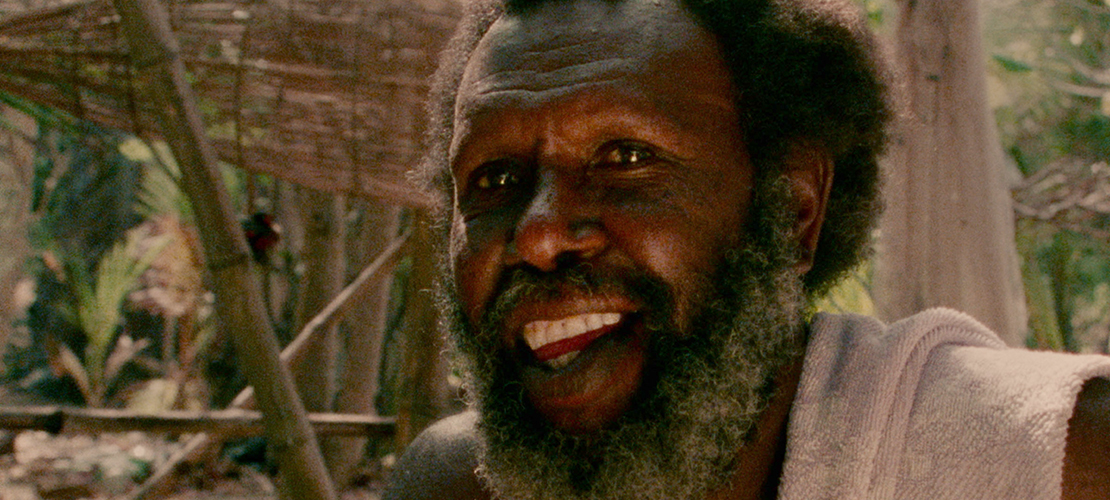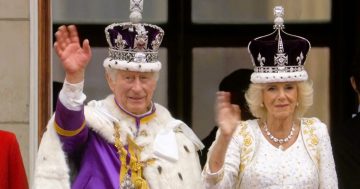
Edward “Koiki” Mabo at Las, Mer (Murray Island) September 1989. The image is taken from the film Land Bilong Islanders (1990). Photo: Trevor Graham/Yarra Bank Films.
While events are being staged across the country to mark NAIDOC Week, a small display at Australia’s Parliament House quietly tells the story behind the story.
Thirty Years After the Mabo Decision uses archival images, film footage, audio and artworks from the Australian Parliament House collection to tell the Mabo story and show it as a living narrative.
Using works as diverse as postage stamps and portraits, as well as parliamentary speeches and a film made at the time, the display tracks a momentous time in Australia’s history, culminating on 3 June 1992 when the High Court of Australia handed down its landmark ruling on Mabo v Queensland No 2 which established the principle of native title rights in Australian law.
Not only did the judgment overturn the concept of terra nullius, that Australia was a “land belonging to no one” in 1770 when James Cook claimed it for Britain, it also brought into focus the long, steadfast campaign led by Edward “Koiki” Mabo on behalf of the Meriam people of the Torres Strait Islands for ownership of their country.
The victory came when the High Court found that the Meriam people occupied and continued to occupy the land as they had for generations before European arrival. By recognising the rights of the Meriam people, the Court also found that First Nations Australians continued to hold the rights to their land and seas because of their traditional laws and customs.
The outcome was a tribute to those fighting for the cause, only marred, as it was, by the tragedy that Mabo and two of the other plaintiffs, Sam Passi and Celuia Mapo Salee, died before the High Court handed down its decision.
But their legends live on.

Manbarra/Meriam peoples, the Eddie Mabo Stamps, by Boneta-Marie Mabo 2013. Photo: Parliament House Art Collection, Canberra.
Curator of Thirty Years After the Mabo Decision, Dr Alison Holland, who has spent the past six months researching the project, said in a significant story like Mabo, it was important for the process of government to be seen – and where better than Australia’s Parliament House?
“What we’re doing here is showing how the decision came about in incremental stages,” she said. “It shows the recognition of customary and legendary law and how they can work together on something like this,” she said.
Dr Holland said the contribution of stills from the work of filmmaker Trevor Graham of Yarra Bank Films helped bring the story to life.
“Trevor was one of the few people to document the whole process,” Dr Holland said, making particular mention of the image Edward Koiki Mabo at Las Mer (Murray Island), September 1989, which is a still from the film Land Bilong Islanders (1990). It shows a young, vibrant Mabo on country, a place where his connection knew no boundaries.
“The image captures the real character of the man, of the Torres Strait,” Dr Holland said.
“Trevor helped give voice to the people of the Torres Strait and explored the process of tabling Bills and how they become living documents.”
The Mabo ruling is a “living document”, which is why it is not on show in the display.
Mabo’s connection with country is best illustrated in the works of his granddaughter, Boneta-Marie Mabo, whose series of stamps of the Manbarra and Meriam people also feature in the display.
Dr Holland said she hoped the Mabo display would help visitors to Parliament House better understand how the nation’s legislation works and how it reflected back on its population.
“The idea is to relate it back to the business of Parliament when these significant events occur.”
Australian Parliament House Art Collection assistant director Katherine Nguyen said it was important for the House to stage such a display for the 30th anniversary that recognises the co-existence of customary and government law.
The Parliament House art collection contains about 6,500 works, from tapestries to modern sculpture and traditional portraits, all acquired for Parliament House because they tell a unique Australian story. Artworks are on rotational display throughout the building.
“We purchase Australian art for the collection from all over the country so we have a truly representative collection,” Ms Nguyen said.
Thirty Years After the Mabo decision is on display at Parliament House, Canberra, daily until 6 November 2022. Entry is free. Aboriginal and Torres Strait Islander visitors are warned that the display contains the names and images of deceased persons.
Original Article published by Sally Hopman on Riotact.








